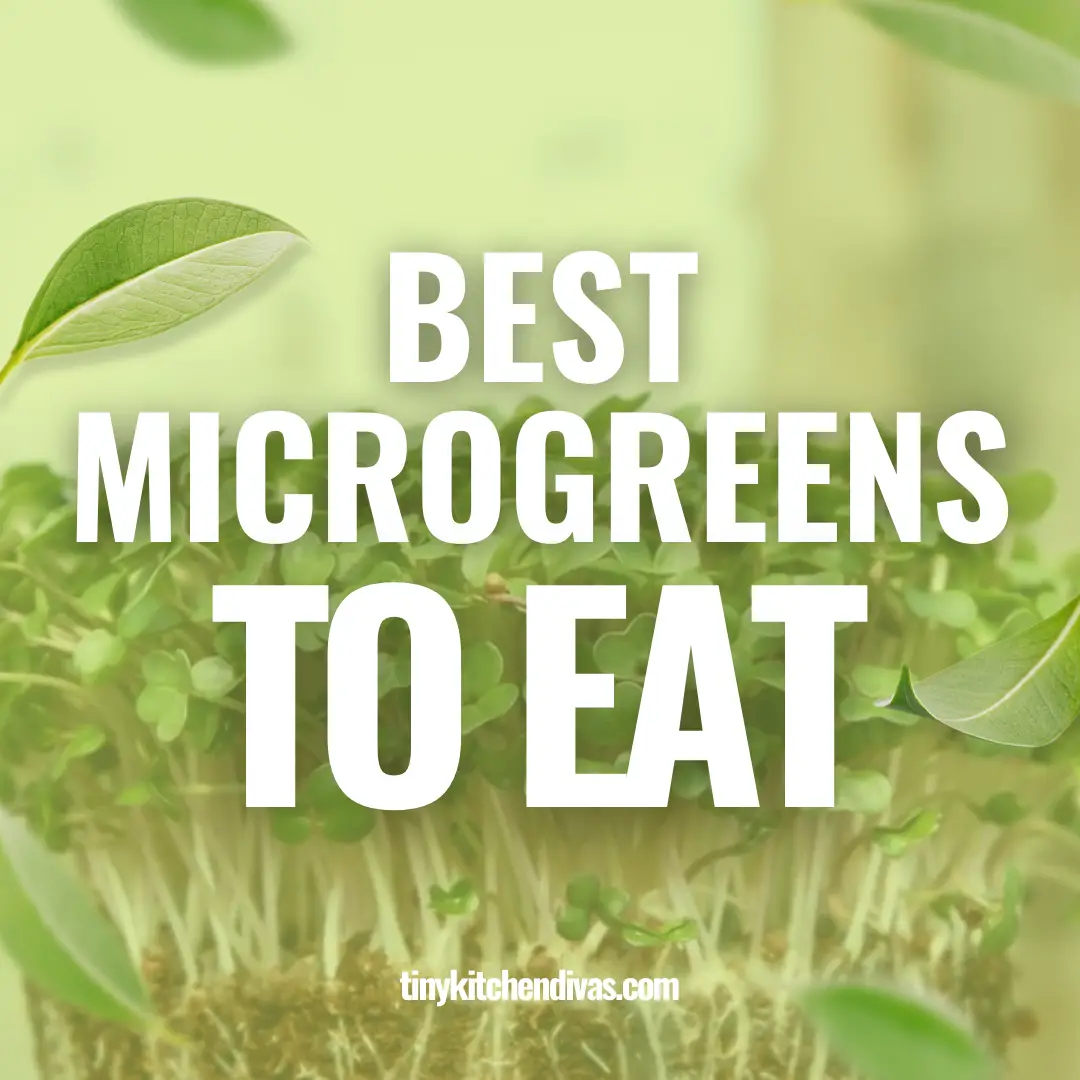Microgreens are vegetable greens collected immediately after the cotyledon leaves (seed leaves) have formed with one set of genuine leaves (not to be confused with sprouts or shoots). They are best used as a dietary supplement, a cosmetic enhancement, or a flavor and texture enhancer.
Microgreens can be plucked and consumed a week to ten days after the cotyledon (a component of the embryo within the seed) leaves have developed, compared to larger herbs and vegetables that take weeks or months to grow.
These miniature versions are only a few inches long and come in 50 to 60 different varieties. They have a higher nutritional concentration than fully developed plants. Due to their high cost, microgreens were once only found on fancy dinner plates and in boutique grocery stores.
They have a rich flavor and can be consumed in salads, curries, smoothies, pasta, pizza, burgers, and much more.
Are Microgreens and Sprouts the Same Thing?
Sprouts and microgreens may seem alike, but they are not. Sprouts are germinated in water rather than soil for one or two days to produce underdeveloped leaves. Microgreens require soil and sunlight to thrive, and the appearance of leaves takes at least a week.
What are the Best Microgreens to Eat?
Mung Bean Microgreens
- Mung beans are rich in vitamins and minerals and are one of the greatest plant-based protein sources.
- Many beneficial antioxidants can be found in Mung Bean microgreens. These antioxidants help neutralize potentially harmful chemicals known as free radicals, lowering the risk of chronic disease in the long run. These antioxidants may also protect against heatstroke.
- High levels of cholesterol, particularly Low LDL cholesterol, can increase the risk of heart disease. Mung Beans help reduce ‘bad’ cholesterol.
- Mung bean microgreens are high in potassium, magnesium, and fiber, all of which may help lower blood pressure.
Broccoli Microgreens
- Broccoli microgreens have a high level of glucosinolate, which is believed to have anti-cancer properties.
- Sulforaphane, present in broccoli microgreens, has anti-cancer properties.
- It supports cardiovascular health.
- It has anti-ageing properties.
Mustard Microgreens
- Mustard microgreens contain antioxidants that help lower cancer risk and fight flu and viral infections.
- It aids in the detoxification of the liver and blood.
- Calcium and Vitamin K are essential for strong bones, and mustard microgreens are high in both, thus ensuring proper bone formation.
Radish Microgreens
- Eating Radish microgreens aids digestion.
- They are an excellent source of folate. Folate helps to keep your heart healthy by breaking down the amino acid homocysteine. 100 grams of radish microgreens per day may be enough to meet your daily folate needs.
- Compared to broccoli, radish microgreens have a higher glucosinolate concentration and are among the best microgreens in terms of glucosinolate density.
Pea Shoots Microgreens
- Many diseases, such as diabetes, heart diseases, etc. that afflict our health are caused by inflammation. Pea Shoots microgreens are high in antioxidants and phytonutrients, which help reduce inflammation.
- Like many other microgreens, Pea shoots microgreens are high in folate and carotene, which help lower cancer risk.
- Pea shoots are enriched with critical vitamins and minerals for your body and are low in carbohydrate content. Due to its low carbohydrate content, Pea shoots might be a good option for those trying to lose weight.
- Pea Shoots microgreens provide several nutrients that help to keep blood sugar levels in check.
Cabbage Microgreens
- Cabbage microgreens help in the detoxification of blood.
- They also provide relief from pain and promote good eye health.
- Cabbage microgreens can be beneficial for weight management.
- They can also inhibit the growth of cancer cells.
Sunflower Microgreens
- Sunflower microgreens are calorie-dense. A quarter-cup portion of sunflower sprouts has 190 calories, while a quarter-cup meal of sunflower seed kernels has 204 calories.
- They can be a good salad garnish. Sunflower microgreens have an almond-like flavor and offer a good crunch.
Wheatgrass Microgreens
- Wheatgrass is a superfood as it has a powerful combination of nutrients that are extremely good for your health. It’s known as “complete feeding” and offers a variety of therapeutic benefits. With its broad spectrum of vitamins and nutrients, wheatgrass might be a good option for your overall health.
- Wheatgrass is high in A, B complex, C, and E vitamins. Iron, zinc, magnesium, potassium, phosphorus, calcium, and selenium are all present in this green machine. Selenium is a potent antioxidant that promotes thyroid health, enhances blood flow, lowers the risk of heart disease, and promotes good respiratory health.
Cabbage Microgreens
- Cabbage microgreens include a high quantity of antioxidants, carotenoids, vitamins K1 and C, and potassium, which help boost your immune system and reduce inflammation in the body.
- S-methyl methionine, a chemical found in red cabbage, can help relieve gastric distress and remove peptic ulcers. It can soothe your stomach lining and protect it from future problems.
- Cabbage microgreens might help prevent Alzheimer’s disease. More research, perhaps, will help back up these findings.
Conclusion
Microgreens supply a wide range of essential nutrients without requiring significant volumes of veggies to be consumed. They are ideal for picky eaters because they mix seamlessly into other recipes.
If you’re having trouble eating as many vegetables as you should on a daily basis, you can try to consume microgreens to ensure you are getting enough nutrients in your body.
References
About microgreens. (n.d.). About Microgreens. Retrieved June 3, 2022, from https://www.aboutmicrogreens.com/
FDA guidelines for microgreens. (2021, May 10). About Microgreens. https://www.aboutmicrogreens.com/fda-guidelines-for-microgreens/
Renna, M., & Paradiso, V. M. (2020). Ongoing Research on Microgreens: Nutritional Properties, Shelf-Life, Sustainable Production, Innovative Growing and Processing Approaches. Foods (Basel, Switzerland), 9(6), 826. https://doi.org/10.3390/foods9060826


